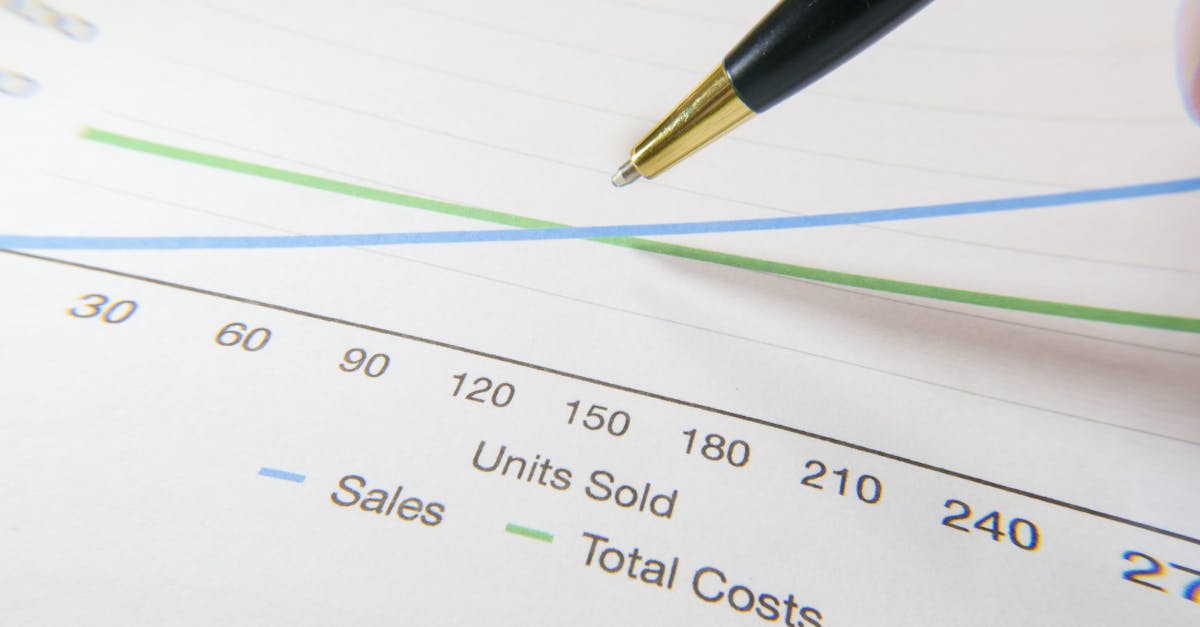Key Takeaways
- Business Process Automation (BPA) revolutionizes digital advertising by automating repetitive tasks like ad placements, bidding, and performance tracking, enabling marketers to focus on creativity and strategy.
- Automation enhances efficiency and accuracy, reducing human errors while optimizing workflows, audience targeting, and budget allocation for better ROI.
- Real-time campaign adjustments powered by BPA tools allow advertisers to respond quickly to market trends and audience behavior changes, ensuring ongoing relevance and engagement.
- Key features of BPA tools, such as advanced data analysis, personalization capabilities, and seamless integration with platforms like Google Ads Manager, streamline operations and deliver actionable insights.
- Successful implementation of BPA requires assessing campaign needs, selecting compatible tools, leveraging big data insights, testing processes thoroughly, and training teams effectively.
Digital advertising is evolving at lightning speed, and staying ahead means embracing smarter tools. Did you know that 80% of top-performing companies use automation to optimize their marketing efforts? Business Process Automation (BPA) isn't just a buzzword—it's transforming how we manage campaigns, saving time and boosting results.
By automating repetitive tasks like ad placements, bidding strategies, and performance tracking, we can focus on crafting creative content that truly connects with our audience. It's not about replacing human effort but amplifying it. With BPA in the mix, digital advertising becomes more efficient, data-driven, and scalable than ever before.
In an era where precision matters more than ever, leveraging BPA ensures we're not just keeping up but leading the charge in delivering impactful campaigns. Let's explore how automation can elevate our strategies and drive measurable success.
Understanding BPA In Digital Advertising
Business Process Automation (BPA) plays a transformative role in digital advertising by streamlining repetitive tasks and improving campaign efficiency. By integrating automation, advertisers can allocate more time to strategy and creativity.
What Is BPA?
BPA refers to the use of technology to automate recurring processes within business operations. In digital advertising, this involves leveraging software tools to execute tasks such as ad placement, budget adjustments, and performance monitoring without manual intervention. The goal is to reduce human error and save time while driving better results.
For example, instead of manually updating bids on multiple ad platforms daily, BPA tools adjust them automatically based on preset rules or real-time data changes. This not only accelerates decision-making but also ensures campaigns remain competitive in high-demand markets.
Additionally, BPA facilitates seamless integration across various marketing tools. Marketers can connect analytics platforms with advertising dashboards for instant insights into metrics like click-through rates or customer acquisition costs. As a result, teams focus on optimizing content rather than getting bogged down by administrative duties.
The Role Of Automation In Advertising
Automation enhances digital advertising by enabling scalable strategies that adapt quickly to market trends. It handles complex functions like audience segmentation and personalized targeting more efficiently than manual methods.
Consider automated A/B testing—a tool that measures which creative performs better across different demographics without requiring constant oversight from marketers. Similarly, dynamic retargeting ads automatically display products users previously viewed online, driving higher conversion rates.
By automating reporting processes too, teams receive regular updates about campaign performance through detailed dashboards or scheduled summaries via email. This eliminates the need for hours spent compiling data from multiple sources while keeping stakeholders informed.
While automation simplifies many aspects of digital advertising, it doesn't replace creative input or strategic thinking; instead, it complements these efforts by removing operational barriers that often slow progress.
Benefits Of Using BPA For Digital Advertising Campaigns
Improved Efficiency And Accuracy
BPA transforms digital advertising by automating repetitive tasks, saving time, and reducing errors. Tasks like ad trafficking, creative updates, tag management, and quality checks run smoothly without constant manual effort. This minimizes mistakes and increases productivity.
Automated workflows help align ads with the customer journey. For example, triggers can deliver personalized messages like cart abandonment reminders or promotional offers at key touchpoints. These timely interactions guide potential customers through the sales funnel effectively.
Cost Savings And ROI Optimization
Automation optimizes resources by streamlining operations and maximizing returns on ad spend. With BPA tools managing bids across platforms using real-time data, campaigns remain competitive without overspending. Efficient budget allocation reduces wasted dollars while improving overall performance metrics.
By eliminating manual processes like compiling reports or making adjustments manually in multiple systems, teams save operational costs. Instead of focusing on redundant tasks, more energy goes into strategy development and creativity—key drivers of campaign success.
Real-Time Campaign Adjustments
BPA enables instant responses to changes in audience behavior or market trends during active campaigns. Automated monitoring identifies underperforming ads quickly so adjustments can be made before losing traction or budget efficiency.
Dynamic optimization features adjust targeting parameters such as demographics or interests based on live feedback from campaign data. This agility helps maintain relevance with audiences while ensuring better engagement rates throughout the campaign duration.
Key Features Of BPA Tools For Advertising
BPA tools are transforming digital advertising by simplifying complex tasks, delivering actionable insights, and enabling more precise targeting. Let’s dive into their standout features.
Data Analysis And Insights
BPA tools provide advanced analytics that elevate campaign performance. They track metrics like click-through rates, conversion percentages, and ad spend efficiency in real time. This immediate access helps us spot trends and make data-driven adjustments quickly.
Platforms such as Automation Anywhere or Microsoft Power Automate analyze vast datasets using AI algorithms. These platforms identify patterns, predict outcomes, and suggest tailored strategies for optimal results. For instance, they might recommend reallocating budget from underperforming ads to high-performing ones.
By leveraging these insights, advertisers can boost ROI without relying on manual reports or guesswork. Timely updates keep campaigns relevant while minimizing wasted resources.
Audience Targeting And Personalization
Understanding audience behavior is key to effective advertising. BPA tools combine digital analytics with demographic data to refine targeting efforts further than traditional methods allow.
These systems categorize users based on preferences like shopping habits or content consumption frequency. For example, if someone frequently searches for home improvement products online, the tool might target them with related ads highlighting discounts or tutorials.
Personalized messaging enhances engagement by addressing specific interests of each user segment. Dynamic retargeting ensures prospects receive follow-up ads aligned with prior interactions—like completing purchases left in abandoned carts—which increases conversions without extra effort from teams.
Workflow Automation And Integration
BPA improves workflows by automating repetitive tasks across multiple platforms seamlessly. Ad placements, budget shifts during peak hours, and performance monitoring run automatically according to pre-set rules.
Integration capabilities connect BPA solutions with other marketing software like Google Ads Manager or Facebook Business Suite for centralized management. This unified approach streamlines operations while reducing errors caused by manual inputs across disconnected systems.
Implementing BPA To Enhance Advertising Campaigns
Business Process Automation (BPA) transforms digital advertising by streamlining operations and improving efficiency. It automates repetitive tasks, allowing marketers to focus on strategy and creativity.
Steps For Successful Integration
- Assess Campaign Requirements
Define objectives and identify processes suitable for automation, such as bid adjustments or performance monitoring. Prioritize areas that consume the most time or are prone to errors.
- Select Compatible Tools
Choose software that integrates with existing systems like CRM platforms or analytics tools. Look for features such as real-time data processing and automated reporting to simplify operations.
- Leverage Big Data Insights
Use advanced IT infrastructure, including data lakes and warehouses, to process large datasets effectively. These insights help refine targeting strategies and optimize ad placements.
- Test And Refine Processes
Run pilot campaigns to evaluate the effectiveness of automated solutions before full-scale implementation. Identify bottlenecks early by comparing results against predefined KPIs like click-through rates or conversions.
- Train Teams On BPA Tools
Provide training sessions for marketing teams to maximize tool usage and ensure smooth adoption of new workflows.
Overcoming Common Challenges
- Data Accuracy Issues
Inaccurate input leads to flawed outputs in automation systems. Use reliable sources for audience data collection, ensuring better decision-making during campaign optimization.
- Integration Complexities
Mismatched tools disrupt workflows in multi-platform environments. Opt for BPA solutions designed with APIs that connect seamlessly across different advertising platforms.
- Resistance From Teams
Examples Of Successful Advertising Automation
Automation in advertising has revolutionized how businesses reach their audiences. By integrating automation into campaigns, companies save time and improve results through smarter targeting and efficiency.
Case Studies
- McAfee
McAfee used marketing automation to enhance lead quality and conversion rates. By segmenting customers effectively, they delivered the right information at precise stages of the buying process. This approach quadrupled conversion rates while driving more qualified leads into their sales funnel.
- Thomson Reuters
Thomson Reuters improved email marketing efforts with automation, refining audience segmentation for better-targeted messages. As a result, they generated higher-quality leads and streamlined collaboration between sales and marketing teams.
- Adobe
Adobe automated ad bidding across multiple platforms using real-time data. They optimized campaign performance by adjusting bids automatically based on specific rules, ensuring competitive placements without manual intervention.
Industry Success Stories
- E-commerce Brands: Many online retailers automate dynamic retargeting ads to re-engage shoppers who abandon carts or browse specific products without purchasing. Personalized recommendations in these ads often boost conversions significantly.
- Travel Companies: Travel agencies use automated A/B testing to refine promotional campaigns for flights or vacation packages quickly. Testing variations simultaneously helps identify what resonates most with potential travelers.
- SaaS Providers: Software companies leverage BPA tools for customer onboarding advertisements that adapt based on user interaction history or subscription preferences, improving engagement rates dramatically.
These examples highlight how automation transforms digital advertising strategies by saving resources while delivering higher returns on investment through precision targeting and adaptability.
Conclusion
Embracing BPA in digital advertising allows us to work smarter, not harder. By automating tedious processes and leveraging advanced insights, we can focus on creativity and strategy while ensuring campaigns are efficient and impactful. Automation doesn't just save time—it amplifies results, optimizes resources, and keeps us ahead of shifting trends.
As the digital landscape evolves, integrating BPA into our advertising efforts isn't just an advantage; it's essential for staying competitive. When technology and human ingenuity come together, the possibilities for campaign success are limitless. Let's take full advantage of what automation has to offer.
Frequently Asked Questions
What is Business Process Automation (BPA) in digital advertising?
Business Process Automation (BPA) uses technology to automate repetitive marketing tasks like ad placement, budget adjustments, and performance tracking. It reduces human error, saves time, and improves campaign efficiency by streamlining processes.
How does BPA benefit digital advertising campaigns?
BPA enhances campaigns by automating tasks such as audience targeting, A/B testing, and reporting. It improves efficiency, accuracy, and resource management while enabling real-time adjustments for better results.
Can BPA improve ROI in digital advertising?
Yes, BPA tools optimize ad spend by managing bids in real-time and reducing waste. They also analyze data to suggest tailored strategies that maximize ROI without manual effort.
What are examples of automated tasks in digital advertising?
Automated tasks include dynamic retargeting ads, bid adjustments across platforms, personalized messaging at key touchpoints, audience segmentation based on analytics, and automated campaign performance reports.
Which companies have successfully implemented BPA for advertising?
Companies like McAfee use automation to improve lead quality; Adobe optimizes ad bidding; Thomson Reuters enhances email marketing with BPA. E-commerce brands also leverage dynamic retargeting ads successfully.
How does automation support creativity in digital advertising?
By handling repetitive tasks like scheduling or monitoring ads automatically, automation frees up marketers' time to focus on creative strategies and producing engaging content for audiences.
What challenges might arise when implementing BPA tools?
Challenges can include data accuracy issues, integration complexities with existing systems, resistance from teams unfamiliar with the technology, or lack of proper training on new tools.
Are there specific tools recommended for automating digital advertising processes?
Yes. Popular options include platforms like Automation Anywhere and Microsoft Power Automate. These tools use AI algorithms to provide actionable insights and streamline workflows effectively.
How do BPA tools enhance audience targeting?
BPA combines demographic data with behavioral analytics to refine audience segmentation. This allows advertisers to deliver highly personalized content that aligns with users’ preferences and behaviors.
What steps should be taken to integrate BPA into an advertising strategy?
Start by assessing your campaign needs. Choose compatible tools that align with goals; leverage big data insights; test workflows before full implementation; refine processes regularly; train your team thoroughly.






